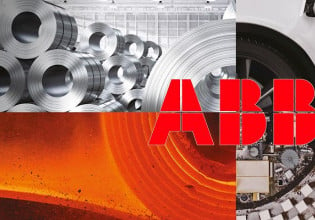How to Train a Robot: Machine Tending
Learn more about how to select and train robots for machine tending applications with specific online resources.
Automation adoption has proven its value in the market. However, with a growing skills gap, it might be more difficult finding workers with the range of skills needed to integrate and operate automation technology.
Current workers might be intimidated or inundated if they have never had the opportunity to work with this type of technology. To help automation adoption, some companies have started providing free online training. Producing educational content can improve confidence in technology while driving sales and reducing the demand for field or installation technicians.
Robot Selection Resources
A previous article mentioned some criteria to select the right robotic arm. This article will cover more information on selecting robots and training for applications such as machine tending with links to online resources.
Universal Robots Resources
Universal Robots (UR): A leading cobot provider offers many online resources, including an application builder. While valuable, it only presents UR devices. This online tool will walk you through step-by-step on how to find the right cobot solution for different applications, end-effectors with a specific section for machine tending.

A look into UR's application builder page where users can select their application needs. Screenshot courtesy of Universal Robots.
If UR proves to be a viable solution, another great resource is the UR academy that offers free online classes on how to install, program, and much more.
Ready Robotics Resources
Ready Robotics’ Robot Selector: Since this company is not tied to any specific brand, it offers an extensive list of robots from different vendors.

A graphic showing Ready robotics various robotic systems. Image courtesy of Ready Robotics.
Answering the need for collaborative or industrial, reach, and payload will provide a diverse range of solutions. Ready Robotics also provides a great selection of online learning, including UR and other OEM solutions. The link goes to Ready Academy’s classes for machine tending, but they have many more.
Igus Resources
Igus RoboLink Designer: Using this free online tool gives anyone the ability to find pre-built solutions or customize their own. With this software, it is possible to see how changes affect the specifications and cost of the robot in real-time.

The robolink modular system for robotics. Image courtesy of Igus.
This platform also allows users to program or simulate the robotic arm’s movements. A BOM is also tracked through the process, so it is possible to order anything designed with this software with the click of a button.
Vention Resources
Vention: It isn’t all about the robot arm. Designing quick, easy to integrate robotic cells is a growing trend towards increasing automation in manufacturing.
Ready Robotics also offers robotic cells, but Vention has created its own software that lets anyone select different types of robots, conveyors, and much more to be assembled on pre-fabricated extruded aluminum supports for fast, modular, customizable solutions.
This innovative solution offers the BOM, assembly time, and more to create just about any robotic cell you might need quickly.
Video courtesy of Vention.
Another factor to consider when selecting a robotic arm is the environment in which the robot will be operating. An ingress protection (IP) rating will help select the protection needed to operate in different environments.
If the right robot solution doesn’t provide the protection needed, companies such as RoboWorld offer RoboSuits to add protection to these devices.
The resources provided in this article can help anyone with or without robotic experience develop automated solutions quickly. These modular solutions in robotics show a trend we have seen for years in consumer products.
For example, Legos give users the ability to create what they want. Today, with sensor technology and software tools, this concept of versatile building blocks are no longer for just simple toys.
Various Resources to Utilize
Platform robotic solutions are continuing to be developed. At the same time, some are available today and provide flexible, modular solutions that offer a blend of quick to produce supports, motors, links, joints, end-effectors, programming, and more for fast integration.
This custom modular trend will continue to grow in manufacturing. A ratio of labor to automation cost will create a forecast for companies to better understand future needs between workers’ skill sets and equipment needs.
Perhaps one solution that hasn’t been explored enough in manufacturing automation goes back to the human side of this modular solution. To see success in automation, companies should consider taking a lesson from Legos and find time to play with these products to see what they might find.
For example, Festo Bionics has created innovation and new solutions. A multidisciplinary group of employees is selected each year and given a challenge. These projects are given freedom and funding to play with technology.

A graphic showing Festo's innovations with bionics and robotic technology. Image courtesy of Festo.
This program creates new problems while providing new perspectives and inspiring new solutions. Each project has yielded some solution or concept that has been integrated into existing products or has generated new products.
If you are a manager wondering how to inspire innovation or adopt new technology, use the online resources in this article, and don’t be afraid to play or forget to have some fun while you learn.
Featured image courtesy of Hyundai Robotics.






